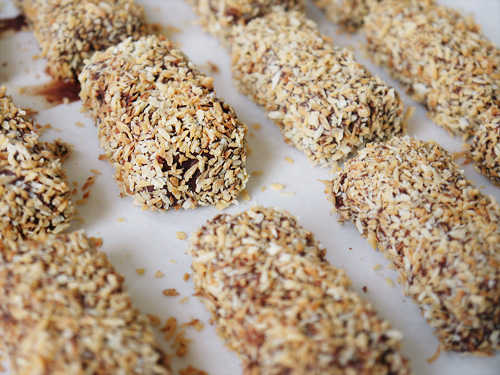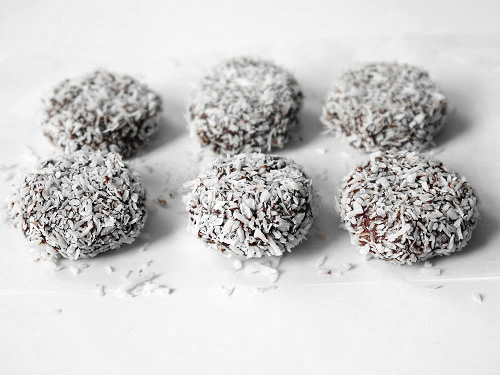In all the years that I’ve been tackling various Christmas delights, what has struck me is how few of them are actually suitable for vegans. Sure, a lot of them could be adjusted to make them suitable, but few of them are, from the out, completely plant-based. Perhaps the nearest traditional recipe I’ve tried has been sugarplums, albeit it you would need to swap out the honey for some other syrup. My festive sweet chestnut wagashi from 2012 were indeed completely vegan, but as they were more the sort of thing you might expect in Japan than from a German Christmas market, I’m not entirely sure that they would really count.
Well, it’s time to change that. The hero of the hour is that most frustrating of fruits, the quince, which appears in various countries as part of their festive fare. They always look so enticing, large, smooth and golden. Indeed, they are reputed to be the real “golden apples” that Hercules was challenged to steal from the Garden of the Hesperides (although others suggest they were actually oranges), and quinces were also thought to be sacred to the goddess Venus, making them a symbol of love and fertility.

All well and good, but if you’ve every tried to cook with quince (at least the ones that grow in chillier Northern climes), you’ll appreciate that they don’t ripen into sweet, juicy fruit, but remain hard and rather astringent while raw. They might look tempting, but bite into one and you’ll soon wish you hadn’t!
This was very clear to me during autumn – two streets from my house, someone has a large quince tree in front of their house. Every few days, a quince would appear on the ground with some teeth marks. One by one, each of the quinces met the same fate. Clearly several passing opportunists had tried their luck, each being disappointed in turn. No, in this country, we need to cook quinces to change them into something fragrant and delicious.
Indeed, it is the cooking that makes the magic happen. This is not like cooking apples or pears (to which quinces bear similar appearance). Cooking quince down with some sugar and lemon juice transforms the hard pale yellow flesh into something completely different. Rich in colour, ranging from soft pink to deep garnet red, a delicious sweet with a rich pear-and-honey flavour!


In reality, today’s post is really just a jazzed-up version of simple quince paste, with the sparkling element coming from being rolled in granulated sugar. All in all, it’s similar to Spanish membrillo served alongside manchego cheese. Of course, quince paste is not something that is limited to Spain. Similar things pop up all over the place, such as British quince cheese, France’s pâte de coing (which features as one of the Thirteen Desserts of Christmas (Les Treize Desserts de Noël) traditionally enjoyed after a festive meal in Provence) or Croatian kotonjata that is enjoyed at this time of year.
They all follow a similar recipe, but vary the amount of sugar, which results in different levels of sweetness and textures that range from firm and chewy to soft and melting. They are also suitable as a vegan treat, as they contain nothing more than quince, sugar and lemon juice, plus a little water to get things going, relying on the naturally high pectin levels in quince to get a good set (no gelatine here). The only thing you are asked to give to make quince candy is time, time and more time!

I would describe this sweet as similar to Turkish Delight, so if you love that, then you’ll enjoy this. It has that same sweet, slightly chewy texture, albeit it has the graininess of quince rather than the smoothness of Turkish Delight. It’s worth noting that as you puree the quince, rather than just using the juice, you don’t get a completely smooth jelly. However, the main difference from Turkish Delight is that it is a lot, lot easier to make. There is no messing around with cornflour mixtures until everything turns to gloopy goo…just cook the quince until soft, puree it, then add sugar and cook the lot until done. Basta!

I actually made this over two evenings, which is probably the easiest way to do it given how busy we all are at this time of year. The first evening, let the prepared quince cook down. This is the easy bit, and you can leave it on the hob to simmer while you’re doing something else (making cookies or watching a film…). This is the point where you’re also delighted that the quince flesh has turned to a soft pink colour, and you imagine that this will be the colour of the finished candy.
The second evening is a bit more involved. Once the sugar and lemon juice are in the mixture, the lot needs to reduce. Initially this is fine, and you don’t need to stir it very often at all, but as it cooks down, you’ve got a much higher sugar ratio in there, and towards the end, you have the sheer delight of stirring the boiling, bubbling mixture over a very hot stove. Lucky that it is so chilly outside! At this stage, I was amazed by the colour change – gone was the soft, gentle pink, and instead I had an intensely deep, dark red colour. Really quite amazing – this was just the result of the cooking process, where the heat of cooking causes a red pigment called anthocyanin to appear (or maybe it was there all along – I’m no scientist!). The final shade and its intensity is a result of the quince variety and where it was grown. If you make this, you could get the same garnet colour, or it might look quite different. So I guess what I’m saying is that there are no guarantees, so live a little and see what colour you end up with.

A few final little tips – once you’ve made the giant block of quince candy and you have cut it up, you are advised to leave it uncovered in a warm and dry place. This will help the candy dry out slightly. What you want is a surface that is sticky but not wet, so you can coat it in sugar, but the sugar won’t then dissolve and form a syrup that ends up clinging to everything (your worktop, your hair, your Rudolph jumper…).
It is also worth making sure you use the lowest heat possible for this recipe. It is very easy to burn, and the flavour of caramel might be delightful with salt, but it can ruin the fruity flavour of quince. Taking the slow approach will also allow you to control the final texture. My candy had a very firm but chewy texture, which I like, but you may prefer something softer.
So…after all that work…how was it? Frankly, I was terribly impressed with myself. This looked really great – each piece was very regular – and the flavour was fantastic. It has that familiar honey-pear flavour and aromatic quality that you associate with quince, but as the mixture has been cooked for a long, long time, it is much more intense than membrillo you might have with cheese. I think getting a few of these after dinner or as a gift would be very much in keeping with the festive season. If you’re feeling creative, you could try to put the hot quince paste into small silicone moulds, or even just use a cutter to get different shapes before rolling in sugar.
Finally, I should just add that this recipe does make a lot of pieces of candy. I had about 80, all around the size of a walnut, so you might want to try a smaller batch unless you’re a real quince lover!
To make Quince Candy (around 80 pieces, depending on size)
• 4 large quinces
• juice of one lemon
• 300ml water
• granulated white sugar (plus extra for rolling)
Step 1: Prepare the quince pulp
1. Peel and de-core the quinces. Cut the flesh into chunks (I ended up with about 1.145kg of quince flesh from my four large quinces), discarding the peel and pips. Add the water and lemon juice, cover the pot and simmer until the quince is very tender and has a pink colour (at least 1 hour).
2. Mash the quince mixture so it looks like pulp and then pass through a sieve to remove any “stringy bits”. This might take a while, but keep at it and almost everything should go through the sieve. Discard anything that remains in the sieve, and you’ve got your quince puree!
Step 2: Make the Quince Candy
3. Measure the quince pulp by volume and put into a saucepan. For every 500ml of pulp, add 400ml of granulated sugar (i.e. 4:5 ratio of sugar to quince).
4. Prepare a non-stick baking tray ( at least 20 x 20cm/8 x 8 inches). Rub very lightly with a few dots of a neutral oil to prevent sticking.
5. Heat the mixture until the sugar dissolves. Cook over a gentle heat until the mixture darkens in colour and you can scrape the bottom of the pan – it should leave a trail for a few moments and not fall off a spoon. You can also test a few drops of the mixture on a cold plate – if it sets firmly, it’s ready. Initially, you can stir the mixture only every 15-20 minutes, but as the mixture reduces, you will need to stand over the pot and stir continuously (i.e. non-stop, otherwise it will burn!).
6. Once the quince mixture is ready, pour into the prepared tray and shake lightly to even the surface. Cover loosely with greaseproof paper and leave overnight to set and cool.
7. The next day, turn the quince candy slab out of the tin. Cut into pieces, and spread on a sheet of greaseproof paper and leave in a warm, dry place to dry out slightly. After a couple of days, roll each piece in more granulated sugar to finish.










